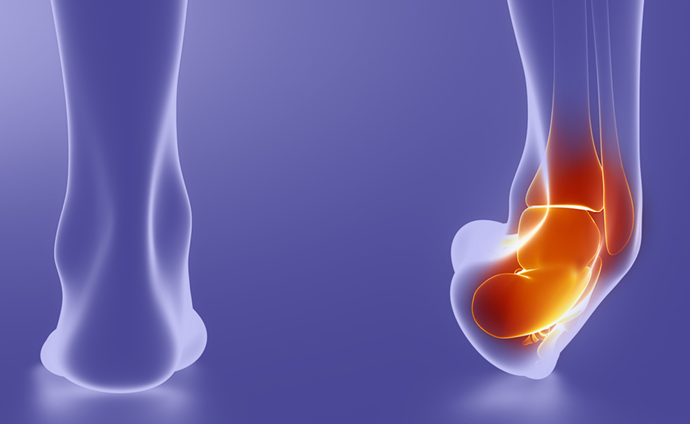Sprained ankles are an extremely common injury, yet so often people leave them untreated, thinking that eventually the pain will just go away by itself. Unfortunately, this often leads to long term issues that could have easily been avoided if treatment had been sought straight after the sprain occured.
For this reason, it’s important to understand the ins and outs of what causes a sprained ankle and what could happen if you don’t look after it properly.
What actually is a sprained or twisted ankle?
There are a few different types of sprained ankles, but a broad definition is when your ankle twists beyond its normal range of movement, causing you to overstretch or tear a ligament. A sprain can range from a minor overextension through to something much more acute like a fully torn ligament.
The two most common types of ankle sprains are what are known as inversion and eversion sprains. An inversion sprain is when your foot rolls inwards, causing the lateral ligaments on the outside of your ankle damage. This is generally the most common type of ankle sprain.
An eversion sprain is the exact opposite — when your foot rolls outwards and the ligaments on the inside of your ankle bear the brunt of the overextension, causing your medial ligaments grief.
How does that normally happen?
The causes of an ankle sprain can range from quite innocuous to extreme (and will often correspond with how serious the sprain actually is).
Any exercise that involves changing direction or high impact on uneven surfaces are common offenders. Sports like basketball or football that include a lot of fast, stop/start movements and directional changes are some of the worst culprits, but you could also just be walking or running on a bumpy footpath and land awkwardly.
If you are just starting running for the first time, it’s important to gradually build up your ankle strength and stability, similar to if you were starting to lift weights! A physio is just the person to give you advice on how to do this, so booking in for a gait analysis before you start your new exercise regime is a great way to avoid ankle injuries and set yourself up for success.

What are the most common symptoms of a sprained ankle?
A lingering pain in your ankle immediately after you have rolled it is the most obvious symptom of a sprained ankle, but there are others too. Swelling or inflammation, weakness, being unable to put weight through or even stand on your foot due to instability, or stiffness are all possible symptoms.
If you’re unsure whether you have sprained, broken or done some other injury to your ankle, the best thing to do is to get it assessed by a physio — fast. They may send you off for a scan or X-ray to confirm the state of play if required.
It keeps happening! Is that normal?
Well, if you’ve sprained your ankle before and left it untreated, it’s quite likely that there is still a level of damage or instability within the ligament that was sprained, even if the pain appears to have subsided for the most part. This will mean it is more susceptible to spraining again, even if you barely roll it at all.
Can a physio help a sprained ankle heal faster? Or can I just wait for the pain to go away?
Not only can a physio help your sprained ankle heal faster, we can also make sure it heals properly and you aren’t left with any ongoing issues or damage. As mentioned above, a good rule to remember is that just because the pain appears to have gone, doesn’t mean the injury is entirely healed. In the absolute worst case scenario, your untreated ankle ligaments will become so unstable that you may require surgery to reverse the damage you’ve done.
Okay, so how can a physio help?
The team at Spectrum have a few tried and tested therapies that help sprained ankles heal properly and quickly. Of course, the exact treatment you receive will depend on the assessment made at the beginning of your appointment, but here are some of the common ones that are proven to be successful:
GameReady
The GameReady ice/compression technology combines both icing and compression treatment at the same time to reduce swelling, stiffness or pain faster than normal icing and compression can. It is used by many professional sporting clubs and elite athletes around the UK as a treatment for a fast recovery for injuries such as ankle sprains, which is why we like it too!
Mobilisations/manipulations
The biggest things people complain about after spraining their ankle are a lack of mobility and pain at the end of their movement range. Joint mobilisations/manipulations are integral in restoring normal movement.
Joint mobilisations/manipulations are a type of physical therapy delivered by the hands, as opposed to a device or machine and are proven to improve the mobility and function of your soft tissues, joints, muscles, tendons and ligaments.
Guided Exercise Therapy
When it comes to re-stabilising and strengthening your ankle ligaments after damage, some guided exercise therapy may be in order — either in the specialised gym in our London clinic or at home, but normally a combination of both works well.
Dry Needling
Dry needling is a popular choice for treating any ligament damage, such as a sprained ankle. It allows us to treat deeper layers of your ligament than we would ordinarily be able to reach using massage or manual manipulation. We’ll also sometimes do dry needling of tight muscles higher up your leg, which could be spasming and preventing appropriate movement, to further speed up the healing process.
Life’s too short for sprained ankles! Book a time to see a Spectrum physio and get it sorted sooner.



